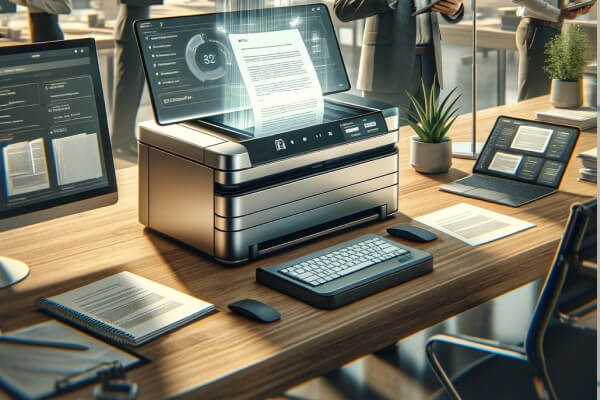Even in
slow-changing industries like the legal sector, where regulations and the momentum of the status quo can obstruct the implementation of newer, more efficient technology, the need for paper documentation is becoming increasingly rare.
Digital records are actually inherently safer and more secure than their printed counterparts. In fact, the added security that comes with digital documentation is a benefit that many remain unaware of. More importantly, many people dismiss or don’t even realize the danger inherent in paper documentation.
1. The paper tray
When you print a document, the printer spits out the finished product right there in the output tray. With printers usually located in a central location, this often means documents are sitting in the middle of the office for several minutes before being collected. This window provides time for several common security lapses to occur: other employees may also be printing, moving documents around or grabbing the wrong copy. Unsure if the printing worked, senders may reprint their document, leaving multiple copies now in circulation; nefarious actors can snatch up documents with personal or sensitive data sitting in the open.
When you send documents digitally, you know the information goes only to the person it’s intended for. Password protection, encryption keys, and user permissions are all powerful tools to ensure data privacy when sending information online, which is not only safer but keeps you in compliance with industry regulations, too.
2. Data streams
The stream of information that flows from the creator of a document to a printer is one more channel for a hacker to target. Cybercriminals are developing increasingly sophisticated tools for stealing information sent to printers. The best way to avoid this is to encrypt all messages sent back and forth, but even safer still is switching to an all-digital platform and cutting out the printing process altogether.
3. Device hard drive
Bills and payments, invoices, employee time sheets and pay stubs, sensitive business data. All of this can be saved to internal hard drives on devices when documents are scanned or sent to a printer. Depending on how long you’ve been using your device, there could be tens of thousands of these documents stored internally on your office printer or scanner.
Many modern printers now come standard with an overwrite function that allows you to delete files you’re finished with, but again, going entirely digital is a better and more secure option. In the meantime, make sure to digitally shred all documents that you don’t need saved and remove the hard drive of devices you’re getting rid of.
4. The filing cabinet
We’ve all seen blockbuster thrillers where a trench coat-clad secret agent with a flashlight in hand finds the sought-after document in a filing cabinet after office hours. Maybe there are no international spy syndicates with their eyes on the beat-up old filing cabinet at the back of your office, but a physical filing cabinet can still make for a tempting target if its contents are known to the perpetrator. And even with the full trust of your team, keys go missing to cabinet locks and individual files or sheets of paper get lost in the stacks. A misfiled document in a large filing cabinet is as good as gone if you can’t find it exactly when you need it.
Luckily, that’s never an issue with digital document management. With text and optical recognition technology, everything is saved in hierarchies of keywords and relevance tags, so finding any document is only a few keystrokes away.
Perhaps even more important than the improvements in workflow efficiency and the reductions in ongoing material costs one achieves when moving to digital document systems is the improved safety and security features on offer. Making the move takes a little bit of planning, but it’s an easy process with the aid of PairSoft. Give us a call today to learn more or to begin the process.






